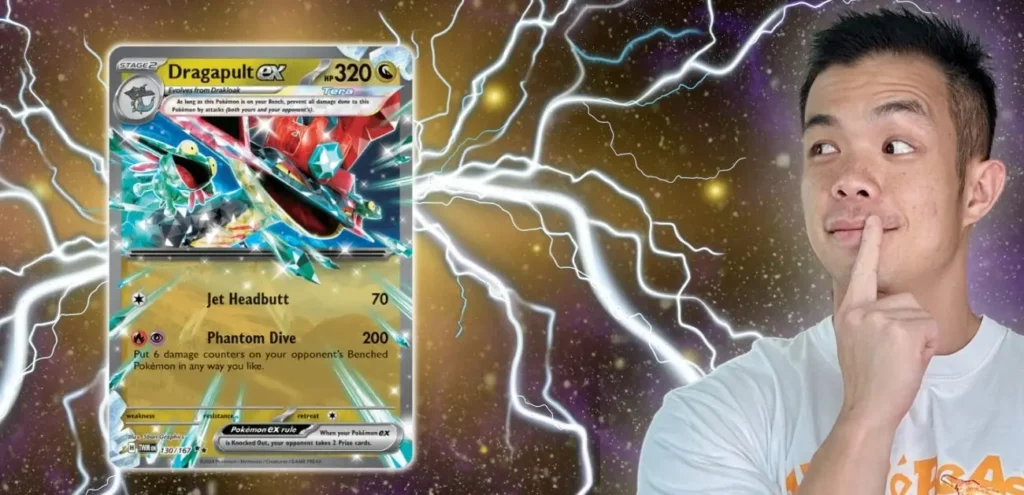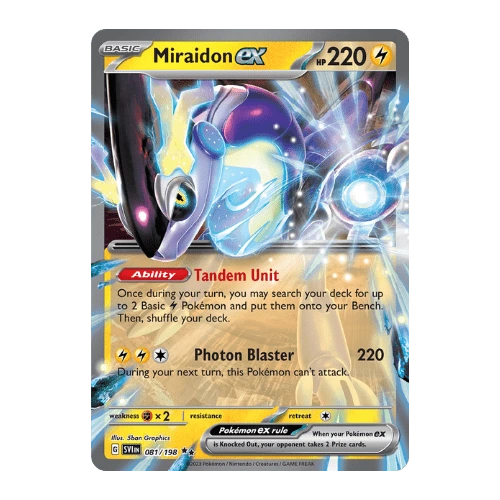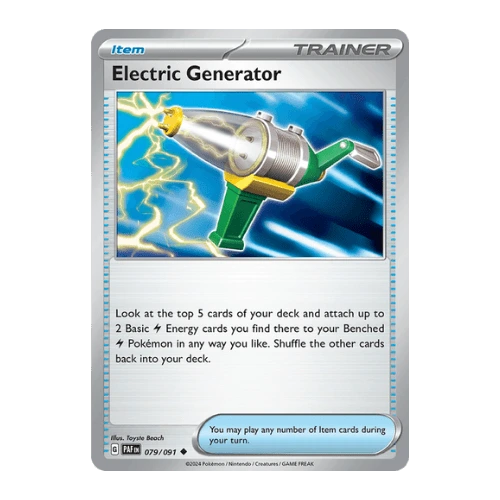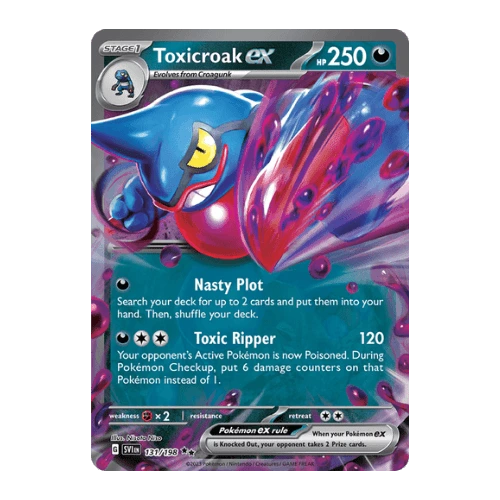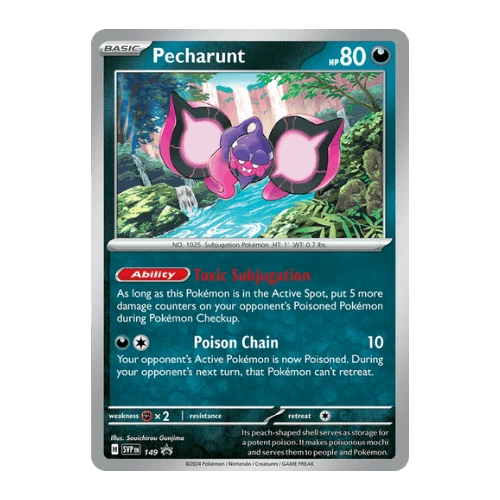Attacking in Pokémon cards involves declaring the attack, dealing damage, and applying any attack effects. A Pokémon must have the required Energy Cost attached to use the attack. Keep reading to learn how this works.
This post may contain affiliate links. See our affiliate policy for more information.
Attacking is one of the most satisfying parts of playing Pokémon TCG. But it’s not just about flashy names and dishing out big damage left, right, and centre. You need to know the rules behind this core mechanic to play the game properly.
This guide explains how attacking in Pokémon cards works and the rules you need to know.
Key Takeaways
- Only Active Pokémon can attack, and only once per turn.
- Attacks can deal damage as well as additional effects, depending on the attack.
- Your Pokémon must have all required Energy Cost attached to use an attack.
- Always follow the exact wording of the attack effect if applicable.
- Build your deck around card combos to maximize attack damage and gain the advantage.
Reading A Pokémon Card Attack

Understanding how to read an attack is essential before you learn how attacking works in Pokémon cards. Every Pokémon attack carries four pieces of information: name, energy cost, base damage, and effect text.
Here’s what each piece of information means.
1. Attack Name
This is purely an identifier. But it’s still important because some card effects (like those from Trainers or Abilities) may reference specific attacks by name.
2. Energy Cost
These are the circle symbols to the left of the attack name. They show the type and amount of Energy that needs to be attached to the Pokémon for it to use the attack.
Colored symbols with an elemental symbol represent a specific energy type. White symbols with a star represent a “Colorless” energy, which means any type of energy can be used. For example, Dragapult ex (TWM 130) needs a Fire and Psychic energy to use Phantom Dive. Either Fire or Psychic energy can be used for Jet Headbutt.
3. Base Damage
This is the big bold number on the right-hand side of the Pokémon attack name. It indicates how many damage counters to put on your opponent’s Pokémon (before modifiers from effects and resistance/weakness).
4. Attack Effect
Pokémon card attacks often deal additional effects in addition to base damage. These are called attack effects, and they’re printed below the attack name.
Attack effects are unique to every Pokémon card, and they are always clearly explained in the effect text. They may modify damage, alter the board state, inflict status conditions, and more. So make sure you read the effect carefully.
Every so often, the Pokémon Company releases Pokémon cards with attack effects that break the standard PTCG rulebook. In such cases, always follow the card effect over the standard rules.
Pokémon Card Attack Sequence

Now that you know how to read an attack, you’re ready to learn how to attack in the Pokémon TCG.
The Pokémon TCG attack sequence boils down to three steps: attaching energy, choosing an attack, and applying damage and effects. It’s pretty simple. But a few technical details might trip you up.
Let’s walk through the process.
A) Attaching Energy.
This is all about charging up your Pokémon attack. Your Active Pokémon must have the Energy Cost attached, or more, before it can use an attack.
You’re allowed to attach one Energy to any Pokémon once per turn.
B) Choose An Attack
Some Pokémon cards have multiple attacks to choose from. This is particularly common as you begin evolving Pokémon.
If the Pokémon card has the required energy attachments, you can use the attack by declaring it to your opponent. You only get to attack once per turn in Pokémon cards, so choose carefully!
C) Check For Effects
Apply any status effects that might modify attack. For example, confused Pokémon need to flip a coin before attacking. Or the Pokémon might have a “this Pokémon cannot attack on the next turn” effect applied, in which case, it cannot attack.
C) Applying Damage & Effects
Now it’s time to “resolve the attack”. You do this by applying the base damage, applying weakness & resistance, and then following the attack effect instructions.
9 Rules For Attacking In Pokémon Cards
There are rules you need to follow when you’re attacking in Pokémon Cards:
1. You Only Get One Attack Per Turn
One attack. That’s it. And only your Active Pokémon gets to attack. Benched Pokémon cannot attack.
2. No Attacking On First-Turn If You Go First
Under standard turn rules, you cannot attack on the first turn if you go first. That’s been the case ever since the 2014 XY format rule change and still holds true in the 2025 Standard format. The rule is designed to even the playing field by preventing first-turn knockouts and instant wins (called “donking”)
You can attack if you’re going second. Just make sure you have the energy attached. This means you can start applying pressure immediately, especially if your deck runs fast Basic attackers like Chien-Pao ex.
3. Energy Cost Must Be Met
You can’t attack unless your Active Pokémon has every Energy specified in the attack’s Energy Cost. You can still attack if your Active Pokémon has more than the required Energy Cost.
4. Attacks Must Be Clearly Declared
Say it by name. Loud and clear. And point to it. Your opponent needs to know which attack you’re using. This is especially important in competitive play, where you can be reviewed and penalized by a Judge for breaking rules.
5. Always Follow Attack Effect Text
If a Pokémon card attack says “flip a coin,” you’d better flip it. “Discard an Energy”? Do it. “Do 10 to each Benched Pokémon”? You know what to do. Can’t do what the attack asks? The attack can’t be used.
Some attacks break the rules. For example, Dipplin (TWM 018) can attack twice under the right conditions. Card text always takes priority in these situations.
6. Attacking Ends Your Turn
Your turn ends once you attack. You don’t get to evolve. You don’t get to retreat. You don’t get to play that Supporter you forgot about.
7. Abilities Do Not Count As Attacks
Pokémon card abilities are not attacks. This means you can use an ability, or even multiple abilities, before attacking.
9. Special Conditions Can Stop Pokémon Attacking
Your Active Pokémon cannot attack if it is Asleep or Paralyzed. If it is Confused, you flip a coin before the attack. If heads, the attack proceeds as normal. If tails, the attack is cancelled and the Pokémon does 30 damage to itself.
Main Attacker vs. Support Attacker
Most Pokémon TCG decks are built around a single main attacker backed by a few support or tech attackers that fill in the gaps. Knowing the roles of both is key to building a deck that wins battles.
Main Attacker | Support Attacker |
High damage output | Lower damage output |
High HP | Lower HP |
Used to attack in the early-game | Used to attack in the mid to late-game |
3+ copies in deck | 1 to 3 copies in deck |
Your deck revolves around your Main Attacker. This is the Pokémon you’ll be attacking with most of the game. It’s consistent, reliable, and built to take knockouts turn after turn. Your main attacker needs to hit early and be able to sustain pressure.
Support/Tech Attackers are situational. They aren’t meant to carry the whole battle. But you might call on them if your Main Attackers are KO’d. They may also provide help for specific matchups in which your Main attacker is weak against.
Pokémon TCG Strategies For Attacking Like A Pro
In the Pokémon TCG, attacking blindly is how you lose. Let’s dig into the top strategies to make every attack count, rack up Prize cards, and stay two steps ahead.
1. Stack Combos for Maximum Impact

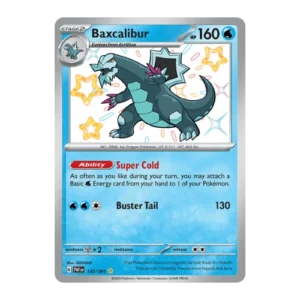
Some attacks aren’t designed to win the game on their own- they’re setup-dependent, waiting for the right moment to explode.
Take Chien-Pao ex & Baxcalibur decks, for instance. Chien-Pao’s Hail Blade does serious damage, but only if you can attach multiple Water Energies in a single turn. That’s where Baxcalibur’s Ability Super Cold comes in, letting you accelerate Energy from your hand every turn.
2. Speed Up Attacks With Energy Acceleration

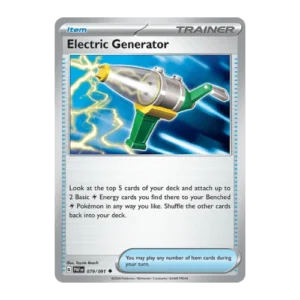
The faster you attach Energy to your Pokémon, the faster you can start attacking- and in today’s game, speed kills.
For example, Miraidon ex decks combine low Energy-to-damage ratio attacks with Item cards that accelerate extra Energy into play. That’s how you punish slow or clunky opponents.
3. Use Special Conditions To Fix Knockouts
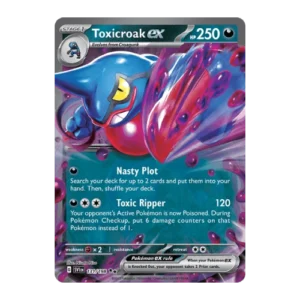
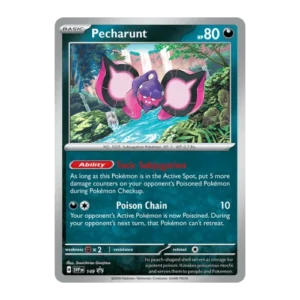
Sometimes, a Pokémon attack falls shy of taking a knockout, and all you need is a few extra damage counters. Special conditions like Poison can do this by dealing damage between turns.
You can take this to the next level by using cards like Toxicroak ex (SVI 131) and its Toxic Ripper or Pecharunt (SVP 149) and its Toxic Subjugation stack even more Poison damage.
4. Combine Attacks with Tools, Supporters, and Abilities
The best players don’t rely on attacks alone- they build attacks that synergise with the attack. This comes in many forms, for example:
- Gusting. Boss’s Order can drag vulnerable Benched Pokémon into the Active Spot for an easy KO.
- Engines. Miraidon’s Tandem Unit ability can be used to bench another Miraidon ex, allowing Photon Blaster to be used on consecutive turns if you can find a way to switch the two Miraidon.
5. Plan Your Knockouts, Don’t Just Swing
Sequence your plays and think several turns ahead. Not every attack should be made immediately. Sometimes, it’s better to leave your opponent’s Support Pokémon stranded in the Active Spot on purpose, while you set up a knockout on their main threat later in the game.
Conclusion
Attacking in Pokémon cards isn’t just about doing damage- it’s about mastering the rules, knowing your main attacker, and building smart combos with support cards.
Because in the Pokémon TCG, the harder and faster you attack, the quicker you win.
FAQ
Kalam is a PTCG gameplay expert and content creator. He started playing and collecting Pokémon cards since 1996. When he’s not working, you can find him nerding out on Anime!
Ready To Level Up At PTCG?

